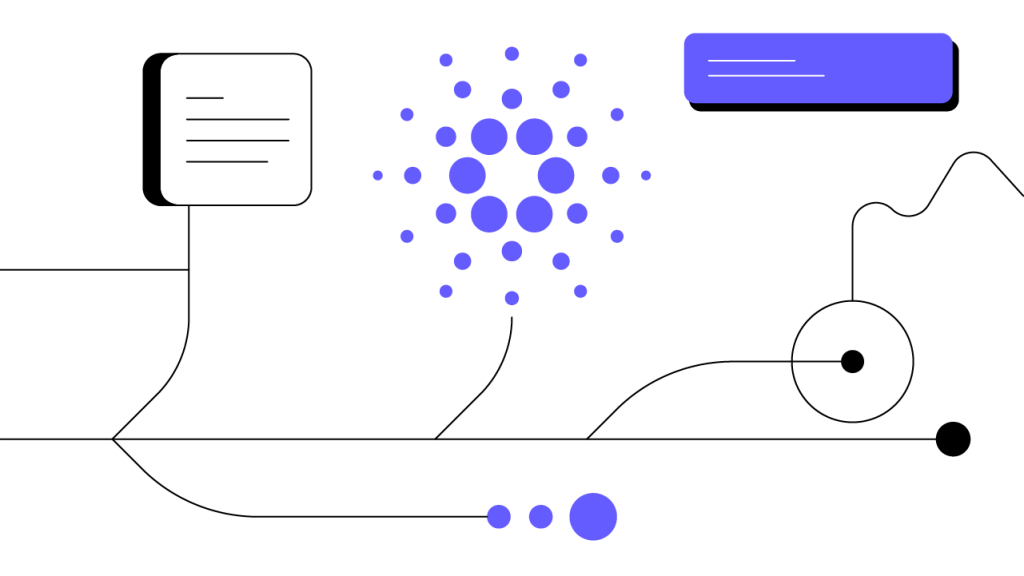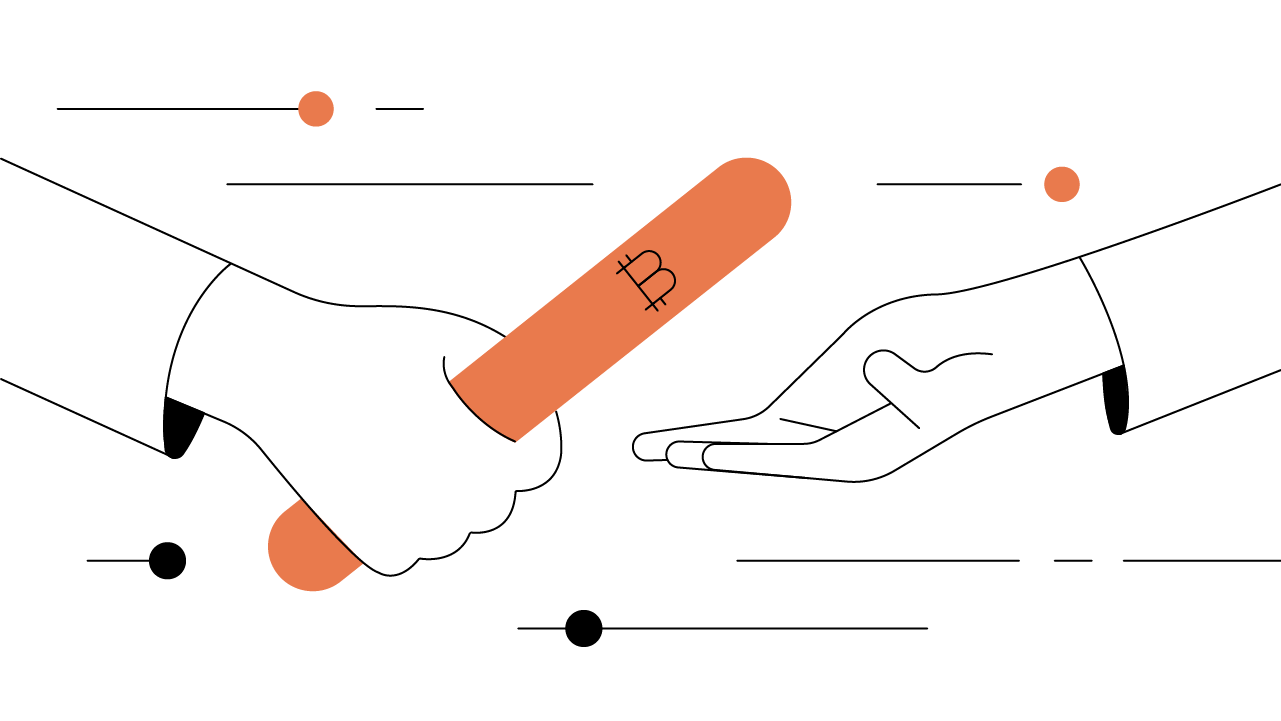Contents
Cardano (ADA): A Research-Laden History and Roadmap
Cardano (ADA) is democratizing the process of consensus and governance. Cardano’s long-term vision is to enable economic empowerment for those who need it most.
By Frederik Gregaard, CEO, Cardano Foundation
Updated November 1, 2023 • 5 min read

Summary
Launched in 2017, Cardano is an open-source blockchain protocol named after Italian polymath Gerolamo Cardano. The native Cardano (ADA) coin is named after English mathematician Ada Lovelace. The scientific references of these two names speak to the project’s research-driven ethos as well as its prioritization of applying sophisticated technical theory to the world of blockchain. Cardano has a distinctive two-layer structure, and the network makes use of a proprietary adaptation of Proof-of-Stake (PoS) consensus called Ouroboros. ADA is used for smart contracts and to facilitate transactions as well as user participation in Cardano’s decentralized governance decisions. Additionally, the ADA coin helps fund blockchain-oriented research, development, and business adoption. As outlined below, current and potential use cases for this high-throughput blockchain include transactions, smart contracts, IoT, DeFi, inventory tracking, NFTs, and dApps.
What Is Cardano?
Cardano is a social and financial operating system based on blockchain technology. Created by a global team of leading academics and engineers, Cardano is a platform to build new technologies, discover new ways to interact, and create new ways to work.
Cardano has been in a state of constant development since the first release of its Byron mainnet in 2017. In its infancy, Cardano’s core vision was to disrupt the way that blockchains reached consensus. Cardano achieved this through its unique Ouroboros Proof-of-Stake (PoS) algorithm, which ushered in a new era of energy efficiency for block validation through the release of Shelley, an update designed to democratize the process of consensus and governance, and push power back to the edges.
Cardano’s brightest minds have now created a blockchain many times more environmentally friendly than earlier Proof-of-Work (PoW) blockchains, which also provides unparalleled security and decentralization through cryptographic proofs, formal verification, and over a thousand community-led staking pools.
The Cardano Foundation: Development and Decentralization
Tasked with the custodianship of the Cardano blockchain, the Cardano Foundation is a Swiss not-for-profit organization dedicated to empowering innovators and changemakers within the blockchain industry.
The Cardano Foundation strives towards a blockchain-enabled future — one based on inclusiveness and transparency. An independent entity, the foundation’s ambition is to empower the architects of the decentralized era, set the direction for governance as a service, and enable economic empowerment.
One of the core missions of the Cardano Foundation is the transformation of decentralization. Although the Cardano blockchain is one of the most decentralized in the world, there are still entities who have direct control over critical aspects of the blockchain. The Cardano Foundation, alongside its ecosystem partners, is seeking to change this by democratizing access to Cardano’s open-source infrastructure, handing the protocol over to the community, and helping enterprise users leverage Cardano’s powerful solutions.
EMURGO: Enterprise Adoption and Utilization
The EMURGO team, one of the founding entities of Cardano, is striving to facilitate a mainstream transition to blockchain technology — encouraging governments, companies, universities, and other groups to leverage Cardano’s broad functionality, extensive security, and high level of transactional throughput.
EMURGO is collaborating on and exploring numerous use cases, including projects devoted to:
Tamper-proof document verification
Anti-counterfeiting solutions for retail
Inventory tracking
IOG: Fundamental Blockchain Research and Engineering
Another founding member of the Cardano ecosystem, IOG (formerly known as IOHK)
is a blockchain engineering company responsible for meticulously updating Cardano’s codebase and facilitating roadmap goals. Founded in 2015, IOG has a strong focus on formal methods and peer-review, publishing scores of papers in support of Cardano and the wider blockchain industry through academic conferences.
IOG works with researchers and engineers at leading institutions around the world to build Cardano on solid fundamentals and verifiable, high-reliability code. This approach to engineering — the same methods deployed for mission-critical infrastructure aboard spacecraft and in high-frequency trading software — has contributed to the robustness of the Cardano protocol and to the applications built on top of it.
In addition to leading research and engineering for Cardano, IOG also explores collaboration with industry partners. One of IOG’s successful pilots is with Beefchain, a cattle-traceability solution which uses a Cardano-based inventory tracking solution called Atala Trace. Other projects are being explored in the luxury goods market and further afield.
Cardano’s Structure and Consensus Algorithm
Cardano features a two-tiered structure: the Cardano Settlement Layer (CSL) and the Cardano Computational Layer (CCL). The CSL, also known as the Byron era enables the transfer of the native Cardano (ADA) cryptocurrency between other blockchain participants. It also enables the immutable recording of transactions, much like other Layer-1 cryptocurrencies such as Bitcoin.
The CCL is a separate layer, composed of multiple components released during the Shelley and Goguen eras, and enables tokenization, smart contracts, and decentralized applications (dApps). Interoperability and an agile deployment environment are essential to the Cardano ecosystem, and Cardano’s engineers are constantly looking for ways to bring in new participants through deploying domain-specific languages and cutting-edge software development kits (SDKs).
Cardano’s proprietary Proof-of-Stake consensus protocol is called Ouroboros and is one of the project’s most groundbreaking achievements to date. Ouroboros is the first PoS algorithm to have been scientifically peer-reviewed and independently audited and verified.
Ouroboros reaches consensus and validates transactions by enabling ADA coin holders to delegate to a stake pool, which functions as a node on the Cardano blockchain. Each node has the chance to be elected as a slot leader and validate a block, which option increases according to the amount of ADA staked to their pool, up to the pool saturation point. Stake pools subsequently receive rewards for successfully validating blocks. These rewards are then distributed to delegates of the stake pool, allowing participants to earn ADA for taking part in consensus.
Ouroboros divides the blocks into time frames called epochs, each of which lasts five days. Epochs are in turn subdivided into smaller increments called slots, lasting 20 seconds each. Each slot is randomly assigned a slot leader, who adds a block into the Cardano blockchain for their particularly assigned slot, and receives newly minted ADA in exchange.
Cardano’s Programming Languages
Cardano (ADA) was the first blockchain protocol to use Haskell, a purely functional programming language. Typically used in academia and high-importance software development, many consider Haskell and other functional programming languages to be more precise, formally verifiable, and better suited to applications that require high-assurance.
Cardano’s unique programming languages for smart contracts, Plutus and Marlowe, are offered as a set of libraries for Haskell, leveraging existing Haskell documentation, toolkits, and a highly professional community to provide a base from which to build secure and enterprise-grade smart contracts. This enables Plutus and Marlowe smart contracts to be carefully implemented in a precise, formally verified code that offers a high level of assurance from the beginning.
In November of 2020, IOG sponsored a nonprofit initiative to encourage the adoption and use of Haskell. However, to encourage non-technical users to create smart contracts and dApps on Cardano, IOG are also developing domain-specific languages (DSLs) which will enable subject-matter experts, such as finance professionals, to write and deploy smart contracts easily in a visual programming language environment without writing complex code.
ADA and Cardano’s Future
Looking forward, Cardano has defined three key components and missions that are of critical importance in the long-term. First, the Cardano blockchain will explore new ways of representing value on-chain through the arrival of native tokens and the proliferation of its staking and delegation environment. Second, the Cardano Foundation and IOG have stated that they will look for ways to provide greater decentralized governance, such as on-chain voting and Governance-as-a-Service (GaaS) capabilities.
Finally, the most important long-term vision for the Cardano blockchain is to provide economic identities to billions of people worldwide, especially those in developing nations, who lack access to financial infrastructure and sovereign economic identities — thus empowering communities who need it most. Cardano has already achieved meaningful market traction and looks to have a bright, and decentralized, future.
Cryptopedia does not guarantee the reliability of the Site content and shall not be held liable for any errors, omissions, or inaccuracies. The opinions and views expressed in any Cryptopedia article are solely those of the author(s) and do not reflect the opinions of Gemini or its management. The information provided on the Site is for informational purposes only, and it does not constitute an endorsement of any of the products and services discussed or investment, financial, or trading advice. A qualified professional should be consulted prior to making financial decisions. Please visit our Cryptopedia Site Policy to learn more.

Author
Frederik Gregaard
CEO, Cardano Foundation
Frederik Gregaard is the Chief Executive Officer of the Cardano Foundation and has more than a decade of experience in banking, wealth management, and asset management. He is a certified currency trader and digital asset management expert. Frederik has worked with a larger number of Fintech companies in Switzerland and abroad predominantly covering DLT, robo advisors, asset allocation, and KYC automatization. He has also built operational and trading infrastructure for more than 100 asset managers and helped implement and advise on cryptocurrencies for Swiss banks and infrastructure providers.
Is this article helpful?


